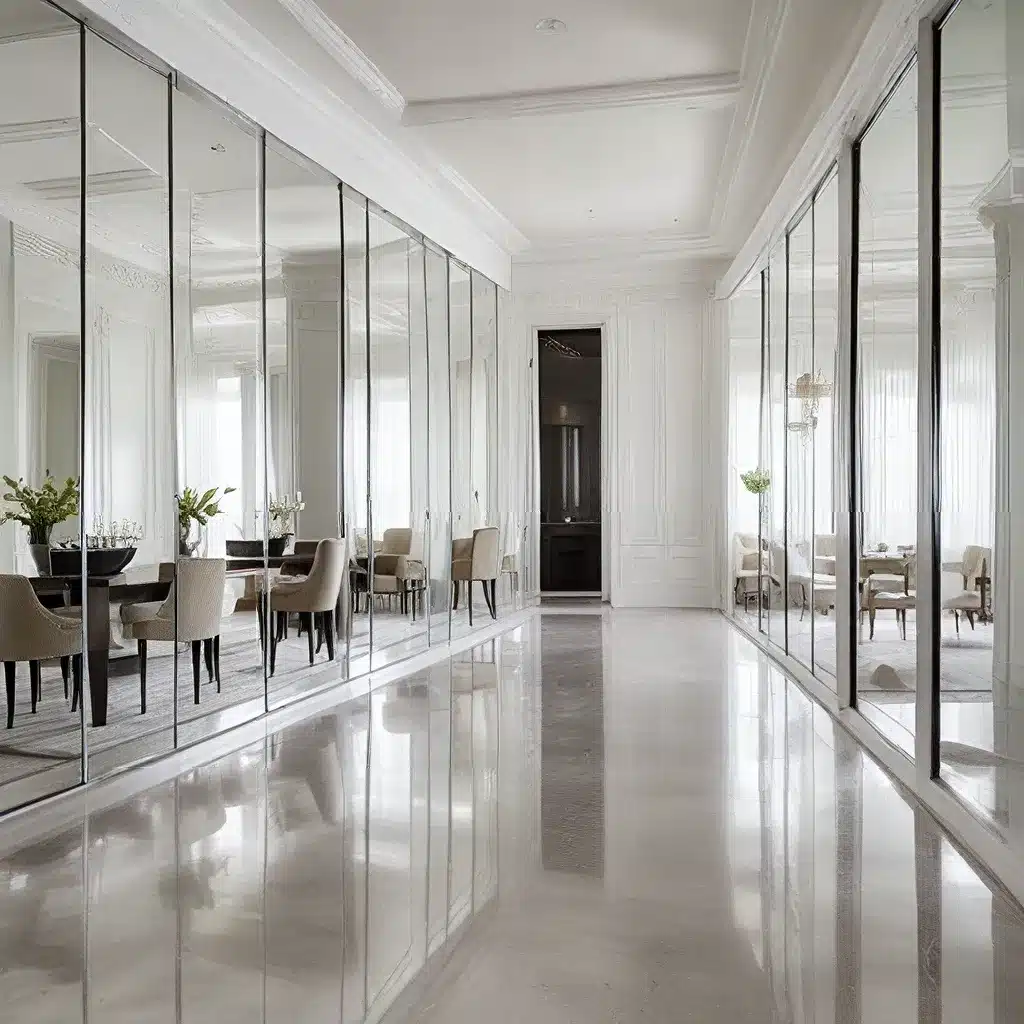
Mirrors: The Versatile Design Elixir
Mirrors are one of the most versatile and effective design elements that can be utilized in a variety of ways to enhance any interior space. Whether you’re looking to expand the appearance of a room, add more light, or reflect the beauty of your surroundings, mirrors can serve both functional and fashionable purposes.
In the world of interior design, mirrors are often referred to as the “aspirin of Feng Shui,” as they can help to “cure” many common design challenges. By strategically placing mirrors, you can not only improve the functionality of a space but also create a sense of depth, introduce an element of luxury, and elevate the overall aesthetic.
Unlocking the Power of Mirrors
Mirrors possess a unique ability to transform a space, making them an invaluable tool in the interior designer’s arsenal. Let’s explore the key ways in which mirrors can be leveraged to enhance your living environment:
Expanding Spaces
One of the primary benefits of incorporating mirrors into your design is their ability to visually expand the perceived size of a room. By strategically placing mirrors, you can create the illusion of depth and open up smaller or more confined spaces. This is particularly useful in urban dwellings or areas where square footage is limited.
The Luna Mirror, for example, features a sleek, frameless design that can be used to amplify the sense of space and reflect natural light throughout a room.
Enhancing Lighting
Mirrors can also be leveraged to enhance the lighting in a space, effectively doubling the impact of both natural and artificial light sources. By positioning mirrors opposite or adjacent to windows, you can bounce light across the room, creating a brighter and more luminous atmosphere.
In a well-designed interior, mirrors can be used to highlight architectural details or showcase decorative lighting fixtures, adding an extra layer of visual interest and depth to the space.
Reflecting Beauty
Beyond their functional benefits, mirrors can also serve as decorative elements that reflect the beauty of a room. By carefully selecting the shape, frame, and placement of mirrors, you can use them to accentuate the existing design features and create a sense of harmony and balance.
For example, a round, feathered gold mirror placed above a fireplace can add dimension and a touch of luxury to a living room, while a custom-framed mirror in a bathroom can enhance the overall aesthetic and provide a functional focal point.
Incorporating Mirrors in Different Spaces
Now that we’ve explored the versatile nature of mirrors, let’s dive into how you can incorporate them into various areas of your home to achieve the desired design effects.
Entryways and Foyers
The entryway or foyer is an ideal location for a mirror, as it can serve both functional and fashionable purposes. Placing a mirror near the front door not only activates the water element in Feng Shui but also provides a final check before heading out, allowing you to make any necessary adjustments to your appearance.
In addition, a well-placed mirror can visually expand the size of the entryway, creating a more welcoming and open impression for guests. The frame and style of the mirror should be carefully selected to complement the overall design of the space.
Living Rooms and Sitting Areas
Mirrors can be a powerful decorative element in living rooms and sitting areas, adding depth, dimension, and visual interest to the space. By placing a mirror above a console table or fireplace, you can reflect the opposite window and bring in additional light, creating a more open and airy atmosphere.
Choosing a decorative frame for the mirror can also enhance the fashion element of the design, transforming it into a statement piece that complements the room’s aesthetic. Alternatively, a mirrored coffee table or antique mirror cabinet can introduce a touch of luxury and amplify the sense of sophistication.
Dining Rooms
The dining room is another area where mirrors can be used to great effect. The blank wall space above a sideboard often presents the perfect opportunity to showcase a unique and eye-catching mirror. The shape, frame, and scale of the mirror should be carefully selected to complement the dining room’s design and accentuate the overall decor.
By strategically placing a statement mirror in the dining room, you can create a focal point that draws the eye and adds an element of interest to the space. This can be particularly effective in open-concept floor plans, where the mirror can visually connect the dining area to other adjoining rooms.
Dressing Rooms and Bathrooms
When it comes to dressing rooms and bathrooms, mirrors serve a crucial functional purpose, allowing you to see yourself from all angles and ensuring a polished appearance. However, this doesn’t mean that you have to sacrifice fashion for function.
By incorporating decorative mirror elements, such as layered gold accents or a custom-framed design, you can elevate the aesthetic of these practical spaces. In a powder room, for example, a mirror with a metal grommet surround can create visual interest and a sense of depth, while a floor-to-ceiling mirror in a dressing area can maximize the reflection and provide a seamless, luxurious look.
Reflective Refinement: Elevating Your Interior Design
Mirrors are a powerful design tool that can be used to transform any interior space, whether you’re looking to expand the appearance of a room, enhance the lighting, or reflect the beauty of your surroundings.
By strategically incorporating mirrors into your design, you can unlock a world of possibilities, creating visually stunning and functionally-optimized living environments that cater to your unique style and needs.
So, as you embark on your interior design journey, be sure to embrace the versatility of mirrors and let them be your guide in elevating the luxury and refinement of your living spaces.

